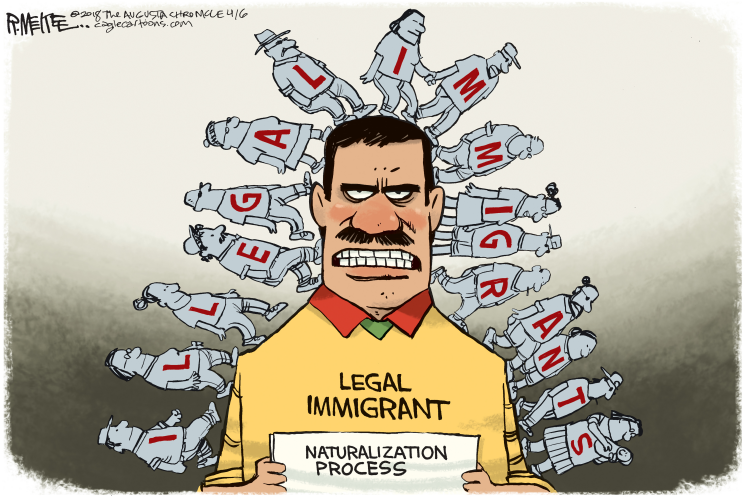A Stunning Dereliction of Duty the Feds
by Joe Guzzardi
DHS' fiscal year 2017 analysis of nonimmigrant, temporary arrivals through official Ports of Entry that includes tourists, temporary workers, students, business travelers and exchange visitors totaled 52,656,022. Of those, 701,900, 1.33 percent, overstayed. The largest offending category is student or exchange visitors, the F, M and J visa holders; Canadian overstayers top the list of violating nations. About 40 percent of visa holders overstay, and they're a major contributor to illegal immigration.,
While the 1.33 percent indicates that the overwhelming majority depart pursuant to their visas' expiration date, the raw 701,900 number tells a different story. Three quarters of a million is roughly the equivalent to the employment-based guest workers who come to the U.S. annually. The logical conclusion is that most overstays are either illegally employed off the books, have submitted falsified I-9s or will eventually find a job to sustain themselves.,
For more than three decades, the U.S. has failed to fix the not-too-difficult-to-correct overstay problem - staggering ineptitude that foreign nationals have taken advantage of.,
Entry-exit verification was first included in the 1996 Illegal Immigration Reform and Immigrant Responsibility Act, and subsequently reiterated various times in Congress. The 2002 visa tracking law required that an integrated biometric database be established so that the State Department and the Department of Homeland Security would have real-time access to law enforcement, immigration and intelligence information on every alien who seeks admission to the U.S.,
Congress and DHS have renewed demands for action in various forms in 2004, 2007, 2008 and 2009. Yet only nominal progress has been made on biometric identification, an essential security component.,
Abu Dhabi, for example, installed its biometric border entry/exit system more than a decade ago to ensure that those removed from the country could not reenter under a new identity and with falsified passports. More than 9,400 passengers have been identified traveling into or out of Abu Dhabi with forged identities. Earlier this year at Florida's Orlando International Airport, U.S. Customs and Border Protection began facial recognition technology for all international arriving and departing passengers, a process that takes less than two seconds.,
The feds' repeated failures are discouraging, to say the least, to frustrated Americans who demand border security. In an era when Costco can identify the exact location of every gallon of milk in its 750 worldwide warehouses, the flimsy excuses that DHS offers, mostly related to costs, a red herring since the expenses could be recouped through higher visa fees, and the tourism industry's self-serving objections, don't wash.,
Through its failure to pursue overstays, DHS tacitly condones the practice, and therefore encourages more of the same. But biometrics would deny visa overstays future entry, effectively deter more visa violations and encourage timely departures.
Ending overstays protects the homeland, the government's first duty. Greater entry/exit diligence helps U.S. workers who otherwise would compete for jobs with visa holders whose permission has expired, but nevertheless illegally take American jobs.
-
Joe Guzzardi is a Progressives for Immigration Reform analyst who has written about immigration for more than 30 years. Contact him at [email protected].